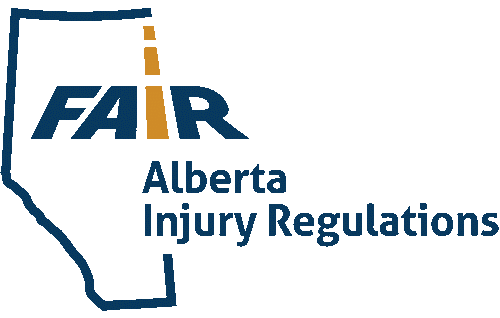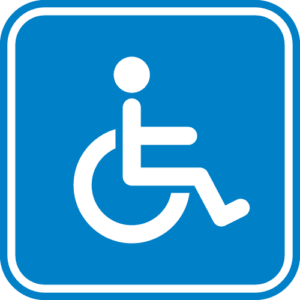McLean v Parmar, 2015 ABQB 62 (CANLII)
This case shows how the Alberta Courts are interpreting the Minor Injury Regulation. Specifically, the definition of “serious impairment.” A WAD II injury can result in serious impairment. In this case, here is how the Court interpreted the definition of “serious impairment.”
[53] The definition of “minor injury” in the MIR indicates at s. 1 (h) that the injury is a sprain, a strain, or a WAD injury that does not result in a “serious impairment”. “Serious impairment” is also defined and it means an impairment of a physical or cognitive function that results in a “substantial inability” to, and I summarise, perform the essential tasks of the Plaintiff’s employment, or of an education or training program, or of normal activities of daily living, that has been ongoing since the accident, and is not expected to “improve substantially”. Further, according to s. 3, the WAD injury must be the primary factor contributing to the impairment.
[54] In my view, the WAD II injury suffered by Ms. McLean is not a “minor injury”. The Plaintiff has displaced the prima facie opinion of Dr. Apel for the following reasons. Firstly, the Plaintiff was unable to continue her employment as a professional server since the collision and although her injuries have “recovered”, which I interpret to mean maximally recovered, she has not been able to return to this physically demanding job. As such, as this consequence of her injury is not expected to “improve substantially” or at all, the physical WAD injury that caused this problem is not a “minor” one.
[55] Secondly, the Plaintiff was unable to perform many of her daily living activities which included the physical part of housecleaning, and physically vigorous sports such as softball which she played regularly on two teams at the time of the collision. The housecleaning disability recovered over a year and a half to two years but the ability to participate in vigorous sports activity is not expected to “improve substantially” and indeed has been replaced by more sedentary activity. Again, this means that her WAD injury is not a “minor” one.
[56] The Plaintiff was unable to do the essential tasks of her CGA training program. Although her condition improved to the point that she was able to enroll two and a half years later, her career and child bearing decisions have been impacted by this disability and there can be no recovery from this serious impairment to her life.
[58] In sum, I find that Ms. McLean has serious impairments to her employment opportunities in that she was unable to return to the essential tasks of her employment as a server despite her maximal recovery and she was not, and will not be able to pursue some of her usual recreational activities primarily as a result of her WAD injuries. As such her strain, sprain and WAD injuries are not “minor” ones as defined.
The Court analyzed the MIR from a common sense point of view and concluded chronic pain (pain lasting longer than 3-6 months) is not a minor injury. The legislature did not intend to include chronic pain within the purview of the MIR.
[59] Further, from a common sense point of view, the overall level of injury suffered by Ms. McLean is not what was contemplated by the Legislature to be a “minor injury” when one looks at the MIR and the protocols set out in the Diagnostic and Treatment Protocols Regulation O.C. 271/2004 A.R. 122/2004 (“the Protocols”) as a whole. Her neck and back problems, which led to significant disability down her arms and affected her training and employment, needed substantial treatment. Over 60 physiotherapy sessions is well beyond the 21 sessions that are automatically approved in a “minor injury” situation. The pain also required massage, prescription medication (when in the past she didn’t even have Advil or Tylenol in the house) and prolotherapy.
[60] Ms. McLean’s problems lasted 2 ½ years, so that according to the Scientific Monograph of the Quebec Task Force on Whiplash Associated Disorders (Hagerstown,MD:JB Lippincott Company, 1995) (the “Quebec Task Force”) and the International Classification of Diseases and Related Health Problems (Canada: Canadian Institute of Health Information), (the “International Classification of Diseases”) pain that lasts this long (i.e. longer than six months and three months respectively) is classified as “chronic pain”, and as such is not, in my view, a “minor injury” strain, sprain or WAD injury.
[65] In my view, upon a review of the MIR and Protocols, the Legislature sought to except more serious injuries, like the ones Ms. McLean has suffered from, from the proposed cap on pain and suffering damages, since her degree of injury does not fall into the majority of ones that were sought to be capped in the first place (the 80% discussed in the Quebec Task Force), and they were not the type that necessarily needed speedy access to treatment resources for a short period of time, but were injuries that would take more time, and more professional resources, to heal. …
[67] Ms. McLean’s case, in part, is a good example in that her strain, sprain and WAD injuries lasted well beyond 3 to 6 months, and involved a much more rigorous treatment regime than 21 physiotherapy visits, so that they should be considered “chronic” and not “minor” according to the Quebec Task Force Report and International Classification of Diseases, and yet, except for the effect to part of her employment and some recreational pursuits that continue to be impaired even though she is maximally recovered, since most of her strain, sprain and WAD injuries recovered in two and 1/2 years and therefore could be considered to be ‘improved substantially’, these injuries could have been considered “minor” under the MIR definition. Very confusing. And certainly not what the Legislature intended.
On June 1, 2018, the Alberta Legislature clarified the definition of what types of injures are minor by amending the MIR. See Temporomandibular Joint Dysfunction, Psychological Injury, and the Minor Injury Regulation.
The analysis of what constitutes a minor injury is not straightforward. It requires a review of the legislation, case law, and a review of how your particular injuries fit within the definition of “serious impairment.” You should always speak with an experienced personal injury lawyer early on in your case. Above all, never settle with the insurance company without getting this important legal advice early. Your injury lawyer should guide you through the process and refer your to the appropriate medical experts to obtain the evidence required to maximize your recovery. This important step could mean a difference of several thousands of dollars of compensation.








